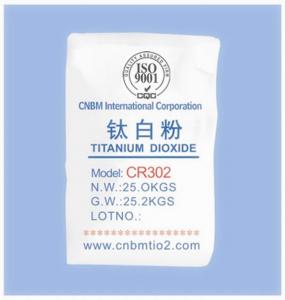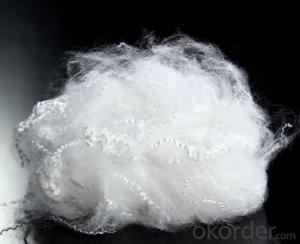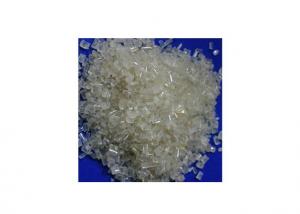Virgin HDPE/LDPE/LLDPE/PP/PVC Granule
- Loading Port:
- China Main Port
- Payment Terms:
- TT or LC
- Min Order Qty:
- 1 Metric Ton m.t.
- Supply Capability:
- 3000 Metric Tons per Month m.t./month
OKorder Service Pledge
OKorder Financial Service
You Might Also Like
Detailed Product Description
Virgin HDPE/LDPE/LLDPE/PP/PVC
Certified Factory offer directly
Competitive price, good quality
Punctual shipment
Certified Factory offer directly
Competitive price, good quality
Punctual shipment
We specialized in offering LDPE, HDPE, LLDPE with Virgin type and kinds colors of Recycled type.
Because there are lots of grade with differenct applications, sorry that we could not display all of them here. But if you have any enquiries, welcome to contact me, we will quote you best service soon.
| No. | item-name | unit | typical value | test methods | |
| 1 | melt phase polycondensation | g/10min | 1.3 | GB/T2951.41 | IEC60811-4-1 |
| 2 | density | g/cm3 | 0.935 | GB1033 | ASTM D1505 |
| 3 | Tensile Strength | MPa | 26.5 | GB1040 | IEC60811-1-1 |
| 4 | elongation at break | % | 900 | GB1040 | |
| 5 | Low elongation at break | % | 475 | GB/T2951.13 | IEC60811-1-4 |
| 6 | Resistance to environmental stress cracking | piece | 0/10 | GB5470 | IEC60811-1-4 |
| 7 | Low-temperature impact brittleness temperature -76 °C breakage | h | >500 | GB/T2951.39 | IEC60811-4-1 |
| 8 | 200 °C oxidation induction | min | 80 | GB/T2951.37 | |
| 9 | Carbon black content | % | 2.52 | GB/T2951.36 | IEC60811-4-1 |
| 10 | carbon black dispersion | fen | 8 | GB15065 | |
| 11 | Dielectric strength | MV/m | 33.5 | GB1408 | IEC60243 |
| 12 | electric volume resistivity | Ω.m | 6.5×1014 | GB1410 | IEC60167 |
| 13 | dielectric constant | 2.45 | GB1409 | IEC60520 | |
- Q: What is the raw material used in the production of plastic products?
- Cling film, plastic film are such materials, heat resistance is not strong. Usually qualified PE cling film will appear hot when the temperature exceeds 110 degrees, and will leave some plastic preparations which can not be decomposed by human body. And wrapped with plastic wrap food heating, food grease is easy to preserve the harmful substances dissolved in the film. Therefore, the food into the microwave oven before, to remove the cling film wrapped.
- Q: Plastic PPT30S add what material will increase hardness?
- Technical parameters of Qilu Petrochemical PP (T30S)Project quality index test method of isotactic index% greater than 95 GB/T 2412 powder ash%, less than 0.03 GB/T 9345 tensile yield strength greater than 28 GB/T, MPa 1040 kg/m3 0.9~0.91 density, cleanness, color particle, /kg melt flow rate of 11~20, g/10min 2~4 GB/T 3682 brand name: Qilu
- Q: What kind of material is the plastic bag commonly used in supermarkets now?
- Then there are some composite materials, such as the very delicate packaging (milk powder and the like), usually OPP and nylon composite.
- Q: What is the hardness of PAEK+30%GF plastic material?
- The German mineralogist 7 (F.Mohs) from nature ten minerals commonly used as the standard, the hardness is divided into 1 degrees to 10 degrees ten grades, namely Moss hardness standard (Mohs Hardness), also known as the Moss hardness (Mohs hardness).Mohs hardness used to express the performance characterization of mineral mutual abrasion resistant ability.
- Q: What material is plastic bag made of?
- PVC-- polyvinyl chloride PVC referred to as PVC, the molecular formula for (CH2 - CH2CL) n, is the most important category of vinyl polymers, is currently the world's second largest plastic varieties after polyethylene. In China, the yield is the first in plastics. In the printing industry, packaging production of books, folders, tickets and other frequently used PVC calendered film cover color and transparent glazing film.
- Q: What is the plastic bag made of?
- Method for identification of toxic plastic bags. The water detection method: put a plastic bag into the water, non-toxic can be surfaced, and poisonous won't rise; hand touch detection method: white or colorless transparent is non-toxic, the hand has a sense of lubrication, the surface like wax; color detection method: toxic haze or color yellow, red, black, feel sticky; jitter method: take a plastic bag shaking, crisp sound non-toxic; sound stuffy astringent toxic.
- Q: What raw materials do plastic color printing plants use?
- PEBOPPOPS film, aluminum film and so on, the ink is usually water-based ink, polypropylene ink, etc., different films with different ink.
- Q: PVC what is the difference between raw and recycled raw materials?
- Products using recycled materials are brittle, easy to break or burst, very durable.
- Q: What are the properties of plastic material PS? What are the advantages and disadvantages?
- The parameters of PS plastic (polystyrene) English Name: Polystyrene weight: 1.05 g / cm3 molding shrinkage rate: temperature: 170-250 degrees 0.6-0.8% molding material properties of electrical insulation (especially high-frequency insulation) excellent, colorless and transparent, light transmittance after organic glass, color of water resistance, good chemical stability, strength, but brittle that is easy to produce stress cracking, no resistance to benzene. Gasoline and other organic solvents. Suitable for production of transparent insulation. Trim and chemical equipment. Optical instrument parts forming performance.
- Q: What is the difference between plastic particles and raw materials?
- Plastic particles: roughly divided into 200 kinds, subdivided, thousands of kinds. There are dozens of common, general plastics, engineering plastics, special plasticsGeneral Plastics: polypropylene, polyethylene, PVC, polystyrene, polyester, polyurethane and so onEngineering Plastics: nylon, PTFE, POM, poly carbon, silicone and so on
1. Manufacturer Overview
| Location | Shandong,China |
| Year Established | 2001 |
| Annual Output Value | |
| Main Markets | North America, South America, Eastern Europe, Southeast Asia, Africa, Oceania, Mid East, Eastern Asia, Western Europe, Central America, Northern Europe, Southern Europe, South Asia, Domestic Market |
| Company Certifications |
2. Manufacturer Certificates
| a) Certification Name | |
| Range | |
| Reference | |
| Validity Period |
3. Manufacturer Capability
| a) Trade Capacity | |
| Nearest Port | |
| Export Percentage | |
| No.of Employees in Trade Department | |
| Language Spoken: | |
| b) Factory Information | |
| Factory Size: | |
| No. of Production Lines | |
| Contract Manufacturing | |
| Product Price Range | |
Send your message to us
Virgin HDPE/LDPE/LLDPE/PP/PVC Granule
- Loading Port:
- China Main Port
- Payment Terms:
- TT or LC
- Min Order Qty:
- 1 Metric Ton m.t.
- Supply Capability:
- 3000 Metric Tons per Month m.t./month
OKorder Service Pledge
OKorder Financial Service
Similar products
Hot products
Hot Searches
Related keywords





















